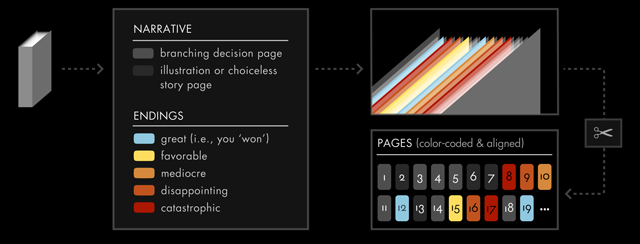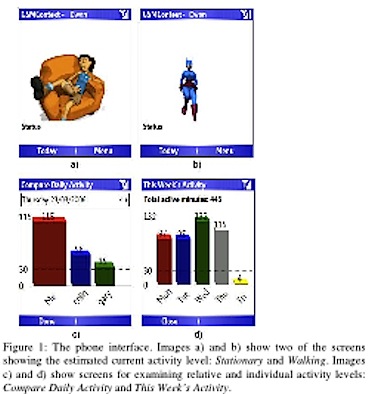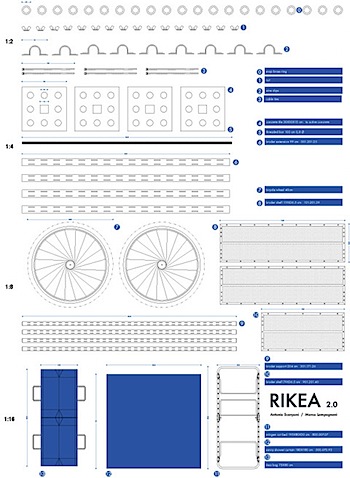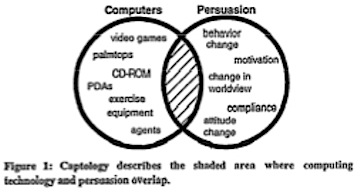Mark Twain (1924) probably had politicians in mind when he reiterated Disraeli’s famous remark (”There are three kinds of lies: lies, damned lies and statistics”). Scientists, we hope, would never use data in such a selective manner to suit their own ends. But, alas, the analysis of data is often the source of some exasperation even in an academic context. On hearing comments like ‘the result of this experiment was inconclusive, so we had to use statistics’, we are frequently left wondering as to what strange tricks have been played on the data.
Uncategorized
Choose Your Own Adventure books
When I was a child I really enjoyed playing with this interactive books. I recently bumped into this web site that analyzes the interaction design of those artifacts and explains eloquently how they works.
As a child of the 80s, the Choose Your Own Adventure books were a fixture of my rainy afternoons. My elementary school library kept a low, fairly unmaintained-looking shelf of them hidden in one of its back corners. Whether this non-marquee placement was an attempt by the librarians to deemphasize the books in favor of ‘serious’ (children’s) literature or was simply my good luck I still haven’t worked out. But it meant there was a place that I could retreat to and dive into unfamiliar worlds without distraction.
A lot of what I read in those days served a similar purpose. A narrative was all well and good, but more interesting to me were the books that laid out a set of places and situations that could outlive their attendant plots — stories that provided scaffolding for my own imagining.

No soy una mujer a su disposición: Mafalda a Berlusconi
Mafalda, la hija pródiga del dibujante argentino Quino, volvió de su exilio para defender a las mujeres de Silvio Berlusconi, primer ministro de Italia. La niña bonaerense repite lo que le replicaron ayer: “No soy una mujer a su disposición”. El diario italiano La Repubblica publica el cartón de Quino en toda su extensión.
[more]

A randomized controlled trial of sweet talk, a text-messaging system to support young people with diabetes
Franklin, V. L., Waller, A., Pagliari, C., and Greene, S. A. A randomized controlled trial of Sweet Talk, a text-messaging system to support young people with diabetes. Diabetic Medicine 23, 12 (2006), 1332–1338. [PDF]
——–
This paper describes Sweet Talk a system that is used to enhance self-efficacy and facilitate uptake of intensive insuline theraphy and improve glycaemic control in patients. The system was tested with 126 patients. Sweet Talk was associated with improvement in diabetes selef.efficacy and self-reported adherence. Participants felt that Sweet Talk improved their self-management.
Design requirements for technologies that encourage physical activity
Consolvo, S., Everitt, K., Smith, I., and Landay, J. A. Design requirements for technologies that encourage physical activity. In Proceedings of CHI’06 (Montréal, Canada, April 22-27 2006), pp. 457–466. [PDF]
———
This paper presents the results of a field study involving the use of Huston, a protype mobile application for encouraging activity by sharing step cound with friends.
The authors build three versions of Huston for the pilot study: a baseline, personal, and sharing. During the first three weeks all three groups used the baseline version of Huston which was used to gather the data needed to establish the individual daily step goals. Then they provided one group with the personal version of Huston and two other groups with a sharing version of the application. The personal version provided a daily goal, indication of progress, and recognition for meeting the goal. The sharing version had an additional feature which allowed the users to share the physical-activity related information with members of their group.
They found that the sharing groups were significantly more likely to meet their goal than participants in the personal group.

Increasing the awareness of daily activity levels with pervasive computing
Maitland, J., Sherwood, S., Barkhuus, L., Anderson, I., Hall, M., Brown, B., Chalmers, M., and Muller, H. Increasing the awareness of daily activity levels with pervasive computing. In Pervasive Health Conference and Workshops (Innsbruck, Austria, Nov 29 – Dec 1 2006), pp. 1–9. [PDF]
——–
The author of this work aimed at designing a system for motivating physical activity that could be adopted without extra equipment. The argument was that specialized technology for sending physical states of the user are indeed useful but can reduce the widespread adoption of a particular technology. They designed Shakra, an application for mobile phones that was able to detect the fluctuactions in the GSM network and use this information to infer the activity level of the user. This information was then used to inform a group of peers to stimulate competition and support self-awareness of activity levels. The authors critic the transteoretical model because it tries to explain motivation using only intrinsic factors, while communicty influence might just be as important as self-motivation.
They tested the Shakra prototype with three groups of users and they found that the participants were more active when they could see each other’s activity level then during the control periods.

Encouraging physical activity in teens: Can technology help reduce barriers to physical activity in adolescent girls?
Toscos, T., Faber, A., Connelly, K., and Upoma, A. M. Encouraging physical activity in teens: Can technology help reduce barriers to physical activity in adolescent girls? In Proceedings of Pervasive Computing Technologies for Healthcare (PervasiveHealth’08) (Tampere, Finland, Jan 30 – Feb 1 2008), pp. 218–221. [PDF]
——–
This article reports the finding from a three week field trial of technology designed to encourage physical activity in teenage girls by leveraging the power of personal relationships. The author provided 10 subjects with a mobile phone application and a pedometer which work together to provide a group support sytem that promotes walking towards a self-established daily step goal. Entered step counts are shared within the group with text messages.
The authors found that automated messages from the sytem were perceived negatively from the participants. More importantly, they found that competition between friends can be a fun way to create motivation for excercise but if competition is taken too far it may contribute to bad feelings and or bad behavior. Finally, they found that the intimacy of a small group of friends was consistently reported by participants as a benefit. The challenge of persuasive technology is to allow for good peer pressure while minimizing opportunities for bad peer pressure.
RIKEA: a manual about how to make a free market set with Ikea re-assembled furniture
Antonio Scarponi sent me this very interesting link on conceptual devices: Conceptual Devices consider design as a social engagement. Its projects operate through a shift of symbolic values due to the social utility and social responsibility of arts and design in contemporary society. Conceptual Devices is currently a network based structure of collaborations set up on specific projects.
RIKEA (a manual about how to make a free market set with Ikea re-assembled furniture) received an honorable mention at the International Architecture Biennale, within the exhibition Squat City.

Theory-driven design strategies for technologies that support behavior change in everyday life
Consolvo, S., McDonald, D. W., and Landay, J. A. Theory-driven design strategies for technologies that support behavior change in everyday life. In CHI ’09: Proceedings of the 27th international conference on Human factors in computing systems (New York, NY, USA, 2009), ACM, pp. 405–414. [PDF]
———-
This paper describes psychological theories that can help and inform the design of persuasive technologies. The starting assumption of the authors is that in the design of persuasive technology a critical design component is often ignored: namely, that the proposed technologies often must effectively integrate into the individual’s everyday life and that they impact the individual’s social world.
According to the authors, the design of persuasive technologies should draw goal-setting theory [Locke and Latham, 2002], which describes how individuals respond to different types of goals and thus which tend to motivate well. For example, the individual must have decided that the goal is important to her and that it is easy to gauge her progress and know when she has met the goal. Feedback and incentives should bve provided at intermediary steps and not only when she finally meet the goal.
The Transtheoretical Model [Prochaska et al., 1992] describes the stages through which an individual progresses to intentionally modify addictive or other problematic behaviors: precontemplation, no intention to change in the foreseable future; contemplation, seriously considering changing; preparation, intends to take action in the next month; action, has performed the desired behavior consistently for less than six months; and maintenance, where the desired behavior has been performed for more than six months.
The theory of Presentation of Self in Everyday Life [Gofman, 1959] describes how individuals attempt to managethe impressions they want others to have of them. The performance encompasses all the activity of an individual which occurs during a period marked by his continuous presencebefore a particular set of observers. A given performance has two regions: front and backstage. Other important concepts include dramatic realization (when the individual draws attention to facts that may go unnoticed), misrepresentation (individuals may bebe incented to misrepresent facts), and secret consmption (acted actions that are incompatible with ideal standards).
According to the authors, technology to encourage lifestyle behavior change must support fundamental impression management needs. Technology may also need to enable the individual to misrepresent something about her behavior perhaps to support secret consumption.
The Cognitive Dissonance theory [Festinger, 1957] explains what happens when an individual realizes that her attitudes and behaviors are inconsistent. When that happens the individual experience discomfort, or dissonance. Therefore, the individual will be motivated to reduce or eliminate the dissonance. The more important the beliefs are to the individual, the more likely she will try to reduce the dissonance.
Therefore, the author conclude that technology should hep the individual remain focused on her commitment to change and her relevant pattern of behavior. The awareness provided by the technology should be persistently available and easy to access.
Persuasive computers: perspectives and research directions
Fogg, B. Persuasive computers: perspectives and research directions. In CHI ’98: Proceedings of the SIGCHI conference on Human factors in computing systems (New York, NY, USA, 1998), ACM Press/Addison-Wesley Publishing Co., pp. 225–232. [PDF]
———
This paper contain a seminal definition of the domain of persuasive technologies, named captology. The author defines five different perspective on computers and persuasion. His original definition of persuasion is: an attempt to shape, reinforce, or change behaviors, feelings, or thoughts about an issue, object or action. According to the author, the persuasive nature of technology does not reside with the object itself. Instead, the persuasive nature of technology depends on the context of creation, distribution, and adoption. In particular contexts, technology inherits a type of intent from human actors. Finally, the paper lists seven research directions for captology.

